What is a Clothing Hanger?
A clothes hanger is a device to keep clothes accessible, unwrinkled and dry. It can be either be shaped like human shoulders for a top, a clamp to hold clothing bottom pieces, both or multiples.
They are either wire, wood or plastic. Reportedly an employee at a wire company in Michigan invented it when there were no hooks left to hang his coat when he got to work.
He grabbed some wire and did a quick fashioning that did the job then, it became what it is today.
Other uses of the wire type include a welding rod, home projects, auto work and antennas. They are collectible.
The shape also brings to thought certain political happenings of late. For our purposes we are interested in the original use in order to make getting dressed quick, easy and imaginative.
Clothing Hangers
For closets we want to consider all sorts of things in selecting hangers. Weight, texture, color, shape and configuration.
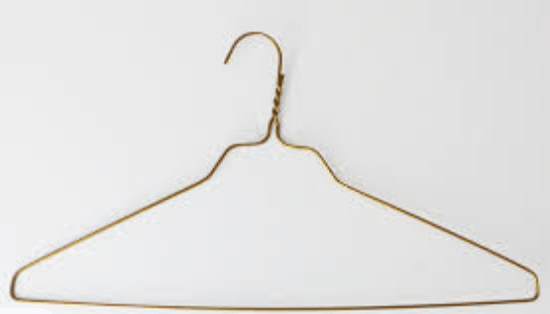
The first of course, is most familiar; the wire hanger for tops or bottoms.
The wire hanger does the basics. It keeps clothes handy and dry with minimum wrinkles provided the shirt is still damp from wash and shaken out to be wrinkle-free.
Clothes slide off easily. That can be good for easy retrieval but bad if the neck of your garment is large allowing it to slip off.
The worst is the creases left in the shoulders of any garment with impressionable fabric and creases pants if they are hung half way. They also are not very heavy and will bend under undue stress.
They can be quickly bent to accommodate a spaghetti strap. If weighted down they don’t slide well on some rack materials.
Because they are thin they do allow maximum volume of clothing to be stored together. Their lightness makes them easy to move with if one must be mobile.
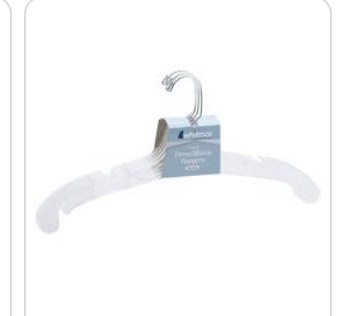
Second is the clear plastic hanger for tops.
Clear plastic doesn’t really offer anything over opaque plastic hangers but there it is they are a thing. Sometimes they accommodate spaghetti straps.
Their hook swivels usually and that can be handy when trying to make all your clothes face one direction for optical uniformity.
They can break under too much tension especially if older. It is light weight for moving easily but not the most glamorous in aesthetic. They allow just a bit less room for clothing than the wire ones but are still pretty lean.
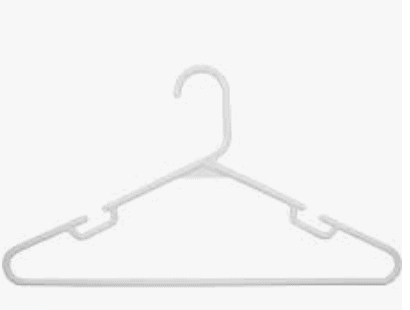
The white plastic hanger for tops and bottoms
The white plastic hanger seems to be pervasive with organizing clients. Some plusses are that it accommodates the spaghetti strap item, is light for moving and gives plenty of room for clothes as the previous hanger.
The negatives include breaking under much pressure and leaving creases in impressionable fabric. If you want to turn your item around to face with all the others you have to take the hanger out and turn it around because there is no swivel head as in the former hanger. Leaves a crease in any pants stored halfway. The bottom could be used for scarves.
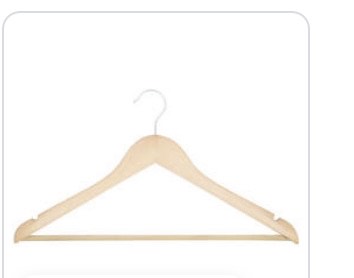
The wood hanger for tops and bottoms
Wood hangers with metal hooks are usually stronger than the plastic or wire so they are better for coats.
They sometimes also accommodate the spaghetti strap. Sometimes the metal hook rotates so you can easily face all items in the same direction but sometimes it just gets screwed out to render the hanger useless.
Aesthetically I find it more attractive than the plastic but it is heavier to move. This one could be used for scarves on the bottom part.
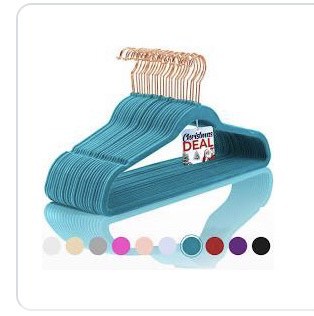
Felt-covered hangers for tops and bottoms
Felt covered hangers have had their go-through of being the usual household hangers. The metal hook generally does not swivel so one can face their clothes in the same direction.
The felt offers something the clothing can stick to so it doesn’t slip off in the closet but it also makes it harder to retrieve an item. They can be matched to many interiors and offer a bit better aesthetic than plastic but are often not very strong like the wood hangers.
Could color code one color to be casual ware and another color to be work. They do well for spaghetti straps.
They also provide lots of room for many pieces of clothing but they will leave a crease despite having felt to buffer the fabric.
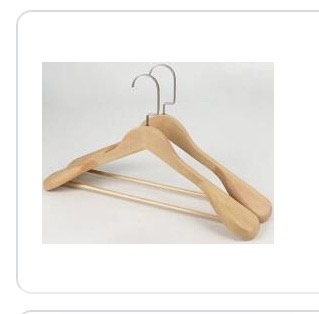
The wood coat, blazer or jacket hanger with scarf bar
The wooden coat hanger is notably stronger than the plastic or felt but also heavier to move. The metal hoof sometimes swivels to line up your clothing easier but not always.
They provide more structure in the shoulder where a garment might misshapen if left unattended on another kind of basic hanger. Wood can seem to be more attractive than plastic because its more substantial.
Less clothing can be put in the same area as other hangers because of its extra form for shoulders.
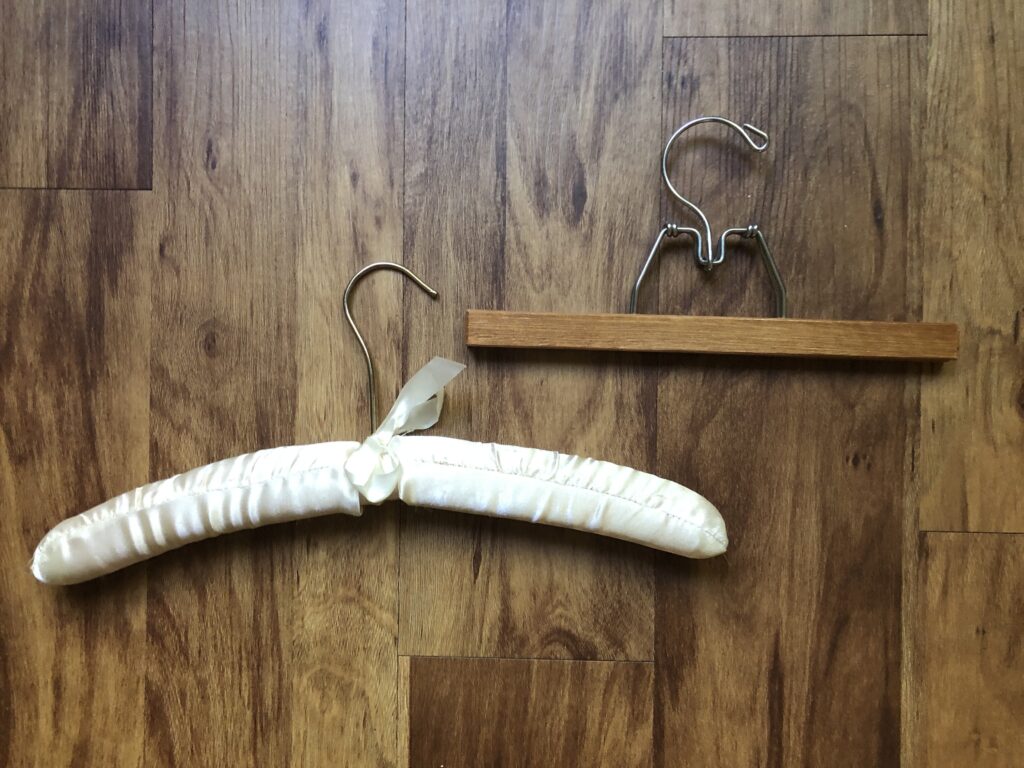
Satin-covered hanger for tops and wood clamp hanger for bottoms
These are my personal favorites. The padded hanger for tops leaves no crease in shoulders unless its a super loose weave.
They are silky in texture making it more aesthetically pleasing. The clothing grips about as well as it slips. The wire hook does not swivel so you have to be sure to put the hanger in the right direction of the piece before you hang it up.
Because of the width one can’t contain the same amount of clothing in the same area. They are a bit bulky to move with.
They accommodate the spaghetti strap well. The wood pant hanger I like because it’s aesthetically pleasing and leaves no crease in pants unless they are suspended in the middle folded. It’s quite easy to maneuver for me. These can be a bit bulky to travel with as well.
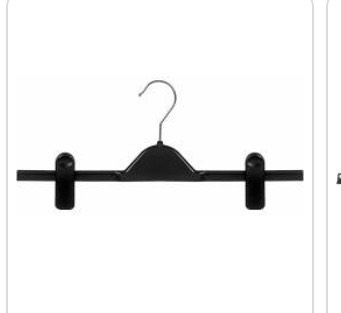
The metal or plastic clip hanger for bottoms.
The metal clip hangers can hold fairly strongly providing they are good quality. Unfortunately the clips usually end up making an indented mark on the fabric but the area is seldom exposed with the usual top or belt.
Never the less it’s not attractive. The plastic ones seem too break a lot. These can serve to hold scarves as well.
The metal hooks usually swivel to make it easier to put all clothing facing in the same direction. I would really reserve these for light fabrics.
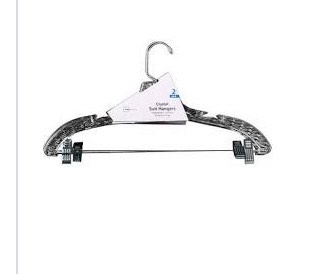
The combo hanger
The combo can do spaghetti straps, tops or pants and skirts. The metal makes it fairly sturdy and the hook swivels for ease of clothing line up.
The clips slide to allow for varying widths of clothing. The plastic part of the main body can break under too heavy an item.

The wooden combo
The wooden hangers with metal hooks can accommodate good weight but are heavy to move with. Things slip off easily for better or worse.
There is ample room to fold a pair of pants over the bar but will still leave a crease in the muffle of the pant. The metal hook usually doesn’t swivel. these can have an added horizontal shape to support the shoulders.
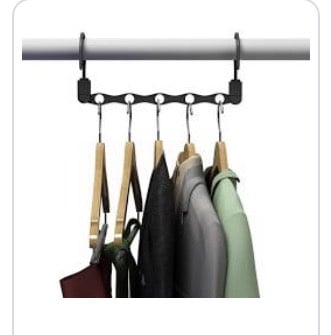
The plastic bundle hanger for tops
The plastic bundle hanger provides the option to be able to unhook one end and have the series flatten out so one can fit more in the closet.
Not my favorite idea. When activating this option the clothes become very hard to access and it’s easy to overlook things if they are not very well organized.

The plastic bundle hanger for bottoms
The cousin of the former hanger is the above pant slide bundle. Again, I don’t call it a favorite because if you unhook one end all the pants get even more heavily creased with the pressure and get harder to access.
It could be used to separate work pants from casual if the category is kept to the bundle limit. If you don’t mind creases half way down your pant leg this style is fairly easy on and off if both hooks are engaged.

The DIY hanger
The DIY hanger is charming but should be finished especially carefully so as not to snag any clothing it holds. The hook does not swivel.
These could give a real design flavor especially if used on a rack made of strong sourced branches. They can be heavy and bulky to travel with.

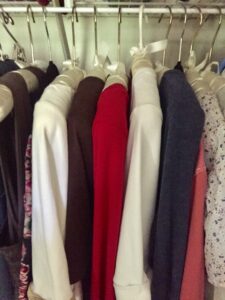
Ready to get your closet organized? Contact us anytime!
Interested to know more about hiring a professional home organizer? Check out this New York Times article!

